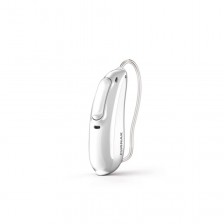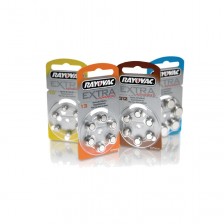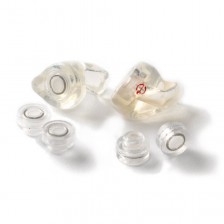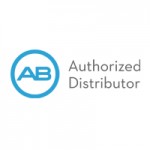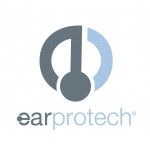How to find the best hearing aids?

There is a wide variety of hearing aids on the market, as many as there are patients, because it is important that they adapt to the lifestyle of each individual and the level of hearing loss presented by the user.
The first symptom of hearing loss is essential to see a professional, as prevention is always the best medicine for any disease. An audiologist is the professional in charge of diagnosing hearing problems, providing solutions and advising on the product or hearing aid that best fits the needs.
If they have already done the relevant hearing tests and the clinician determines that they should start using hearing aids, the time comes when it is more complicated because the large number of types of hearing aids can be overwhelming for the patient.
What to keep in mind?
You should rely on the expert's recommendations, but to avoid unnecessary worries, there is information you can consult:
About the types of hearing aids on the market, and what to consider before buying them.
Your fitting and maintenance.
Types of hearing aids on the market
In a previous article we gave extensive information about the types of hearing aids that exist, but broadly speaking, they are:
The most discreet aesthetically and quite comfortable. The only visible part of the sound output inside the auditory canal is the small plastic thread that connects to the mechanism. They are quite comfortable and are recommended for people with mild to severe hearing loss, but not for people with severe to profound hearing loss.
They are usually larger and more powerful. They consist of a hard plastic sleeve that is worn behind the ear where all the electronics are, and connected to a custom mold of the outer ear. The sound travels from the hearing aid to the ear through the plastic tube and the earmold. They are ideal for people with all types of moderate to profound hearing loss, and are easy to fit and clean.
They are probably the most discreet, hardly seen from the outside because they are placed inside the auditory canal and their shell is made to measure, although they have some drawbacks: they are very conditioned with the anatomy of the ear, and sometimes in some patients they cause the sensation of having the ear "plugged". They are indicated for people with moderate to severe hearing loss.
When choosing a hearing aid it is important to take into account its autonomy capacity, the most important element being the battery, as there is no need to wait to change the batteries. Rechargeable hearing aids are usually made of Lithium-Ion, a material with a high capacity to store energy. They are very small batteries and rarely break down before 6 years of use. While there are no differences in hearing improvement in these hearing aids, they have a number of other advantages such as those mentioned above.
In children it is even more important that the pediatric hearing aids are comfortable to wear and use so that the child gets used to them.
Hearing aid fitting and maintenance
Once the type of hearing aid has been chosen, the hearing care professional will be in charge of adapting it to the patient, explaining well how to put it on and take it off, and will also give advice on maintenance since the better it is, the longer the useful life of the hearing aid will be.
Carry out daily maintenance: cleaning, protection from knocks, do not immerse in water, do not leave it near sources of heat, and when it is not worn, leave it inside its box.
Monthly maintenance: cleaning of filters and microphones.
Annual maintenance: visiting the hearing center to have it checked and adjusted by a specialist.
With the Claso Care plan you can also care for and maintain your hearing aids for a long time.


